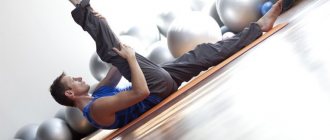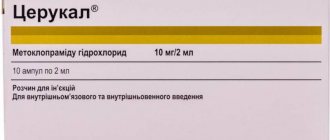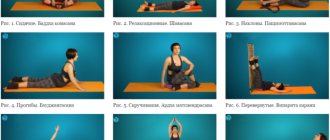A flat, non-protruding belly and a narrow waist are important attributes of a beautiful figure - female and male, but often even generally slender people cannot achieve this effect. To get rid of excess belly fat, there are many types of workouts taken from various areas of sports and fitness. Many of them are aimed at working the oblique and rectus abdominis muscles, but to reduce abdominal volume it is necessary to train the transverse muscles. The vacuum breathing exercise for the abdomen is aimed specifically at working the transverse abdominal muscles. It will help reduce the amount of fat in this area and “train” you not to stick your stomach out during the day.
How quickly will your stomach tighten?
The answer to the question whether a vacuum helps get rid of a tummy is clear: it will help 100% if you don’t feel sorry for yourself and master the correct technique.
Practice and reviews on forums show that on average, one month of daily exercise is enough for the results to be clearly noticeable. Read the reviews and you will no longer doubt whether vacuum gymnastics helps. Try to personally hold out for just one month, and then you won’t leave her. Because you are guaranteed to notice a decrease in waist size and an increase in the overall tone of the abdominal muscles.
It's very easy to get started: you don't even need sportswear, just work out in what you're wearing. Stand up or lie down to try easier variations of the movements and do at least 5 repetitions.
Start your journey to a beautiful figure right now!
(2 ratings, average 3.5 out of 5)
What is a belly vacuum actually for?
In fact, if you constantly do this exercise, then:
- The waist actually decreases. But this happens because the lungs rise a little. The waist may decrease by 2-3 centimeters. The fact is that due to lung breathing, the lungs drop slightly. After performing the vacuum, they also rise slightly, hence the minus 2-3 centimeters.
- Regular bowel movements. Many who do a stomach vacuum note that after regular exercise, stools return to normal.
- The belly stopped falling out. Also, girls who regularly perform this technique note that their belly has stopped falling out. This is due to the fact that the vacuum tones the abdominal muscles.
But to be honest, this exercise is not for the waist at all. A vacuum is needed to get rid of vescilar fat. Vesicular fat is fatty deposits in human organs. When performing the exercise and using the “wave” technique, a gentle massage is performed on the internal organs of a person. This can prevent the appearance of vescilar fat (provided proper nutrition) as well as improve blood circulation. In fact, this is the main feature of this exercise. If done regularly, there will be only advantages for the body.
How to do the “wave” technique? This is an ordinary vacuum, but when performing it, you seem to “push out” the retracted stomach and transfer the center of gravity in one leg to the other. Thanks to this, the “pushed out” stomach moves from left to right and vice versa.
Solid vacuum
Refilling the TV with plasma
| He is standing on something invisible. He walks through the vacuum as if on dry land. And we also follow him along something invisible. It is something more transparent than glass and even air. Cold unblinking stars above our heads and cold unblinking stars under our soles, distinct, like pebbles at the bottom of a mountain lake. It's even scary. The legs are standing on something unknown. “Almighty, how did this come into your head?” - Well, yesterday I was lying and thinking: what should I show the guest? Here they seem to be shouting: “Can’t you turn the liquid phase into a solid?” And we talked so much, talked so much about the consistency of a vacuum. Well, I made up the equation... He squatted down and began to quickly write something on the firmament. His pencil left luminous marks. Colored lines hung above the black-star glass. |
| Georgy Gurevich |
Internal abdominal muscles
The abdominal muscle area consists of external and internal muscles. The external muscles are the rectus abdominis and the external obliques. Crunches force the rectus muscle to move. Forward crunches engage the entire rectus abdominis muscle. When this movement enters the active phase, your hip flexors come into play. And the obliques are more strongly affected by the serious rotation when you reach the opposite knee with your elbow.
The major rectus transversus and psoas muscles are part of the internal abdominal muscles. These muscles are rarely talked about and rarely exercised. These muscles lie under the rectus abdominis and oblique abdominal muscles. Intrinsic muscles help maintain body position and control the depth of breathing during heavy strength exercises such as weighted squats.
The essence
So, in order to get to the bottom of the matter and the benefits (let’s just say, scanty) that a vacuum can give us, it’s worth dispelling a couple of myths that distort the very essence of the vacuum exercise. These mistakes are fundamental and are found in a huge number of fitness experts, public pages and websites. Remember, if you see such statements, immediately close VK/Insta/Google - this means that the person is absolutely “off topic” and will now advise you all sorts of nonsense.
In order to understand the structure of the press, study the article “Press”: myth or reality?.
Myth one: the stomach sticks out due to a weak transverse muscle
The stereotype of abdominal prolapse due to a weak transverse section is paradoxical given the current level of anatomy and physiology. Any physical therapist or truly knowledgeable fitness trainer will see a breakdown in cause and effect. We don’t understand at all why the transverse muscle was assigned such a function.
The transverse abdominis muscle reduces the volume of the abdominal cavity as if on the sides. Prolapse of the abdomen forward is atrophy and hypotonicity of the rectus abdominis muscles
. The transverse cannot affect such an expansion! Weakness of the transverse abdominis muscle leads to a lateral bulge of the waist rather than a frontal bulge.
That is, if your transverse muscle is in poor condition, then it will “enlarge” your waist (read: make you look like a tree stump or Cara Delevingne), but will not contribute to the prolapse of your stomach forward.
Even logically, this should be clear: the transverse muscle is a thin muscle-tendon plate, the muscle bundles of which are directed transversely. The anterior abdominal muscle is flat and wide in shape. She holds back your belly like the Nevsky Livonian Order.
You can check the tone of your transverse abdominal muscle right now! To do this, just try to draw in your stomach as much as possible while continuing to breathe. If your shoulders are lifted up and you can’t pull in your stomach any other way, then a vacuum is even recommended for you. If you managed to pull in your stomach without amplitude in the shoulder girdle, then read the list of contraindications, since the tone of your abdominal muscles is normal, and the reason for your protruding stomach lies elsewhere.
Second: “vacuum trains muscles”
No no no. With the initial, technically correct implementation of the vacuum, as described above, the abdominal muscles do not contract at all! They stretch, and the stomach rises and “sticks” not due to muscle effort, but due to the difference in pressure between the chest and abdominal cavity and the expansion of the chest by the force of the external intercostal muscles.
Third: exercise helps reduce belly fat after childbirth
Exercise Vacuum: benefits and harms
First, let's look at the tangible benefits
of this exercise:
1. Your stomach will become flat and toned, without a single fold.
2. Excess visceral fat surrounding the internal organs will be removed.
3. The waist will noticeably decrease in volume in a very short time.
4. Transverse abdominis muscle
will become stronger and more elastic.
5. Breathing is normalized.
6. The spine will be strengthened. You will forget about problems with your lower back and will be able to do strength training painlessly.
7. You can train anywhere, even at work, and without any special sports equipment.
You can cause harm to your health by performing this exercise only by ignoring the following contraindications
.
1. Diseases of the heart and blood vessels.
2. Problems with the digestive system (inflammatory process or possible internal bleeding).
3. Diseases of the upper respiratory tract and lungs.
4. For infectious and chronic (during exacerbation) diseases.
5. During menstruation and at any stage of pregnancy. After the birth of a child, the Vacuum exercise can be performed, but only in a lying position. This exercise will help get rid of postpartum folds and strengthen the pelvic floor muscles.
How to do a stomach vacuum correctly
As with many static exercises, the result of training depends on conscious control of body movements and correct technique.
The latter includes six stages:
- Sit in a comfortable position.
- Take a calm breath, then exhale slowly, trying to release as much air as possible.
- After this, take a false breath with your chest and at the same time pull your stomach inward. Due to the difference in pressure, the organs themselves will pull themselves towards the diaphragm, although at first you can slightly help yourself with the abdominal muscles.
- Fix the position for a comfortable time (from 15 to 50 seconds).
- Exhale falsely and return to the starting position.
- Take several even breaths and exhalations to relax, and then repeat steps 2 - 6 the desired number of times.
It is more useful for beginners to practice lying down and limit the breath-hold to 5-8 seconds, with a gradual increase in time up to a minute. The minimum number of repetitions is 3, and the maximum is 15.
Have you been working out your abs for a long time, wanting to get a narrow waist, but nothing has changed? I sympathize, because this will not happen if you achieve it in this way. The only option to reduce your waist is to perform a stomach vacuum correctly.
It all started with Yoga
– The abdominal vacuum was borrowed from Yoga practices.
According to their teachings, performing this movement opens the chakras, which allows a person to live easier. One cannot but agree here - after all, living with a beautiful and flat stomach is better than living with a sagging belly.
The vacuum is useful both for ordinary people who want to get in shape for the summer season, and for competitive bodybuilders. For the first, the exercise helps to gain a muscle corset that supports the stomach even after eating, and for the second, it allows you to keep your abs tense longer while posing on stage.
Some people have a wide waist genetically. Trying to correct the situation, they begin to pump up their abs, go on a diet, but only make the situation worse.
They will burn fat, but the waist will remain visually thick. After all, it is logical that by pumping up the abdominal muscles, they increase, thereby thickening the waist. So if someone tells you to do side presses to shrink your belly, hit them. Just kidding, I'm just kidding =).
The secret of a narrow waist
– How to do a stomach vacuum correctly so that the effect is noticeable to the naked eye?
It’s very simple - you need to do it SIS-TE-MA-TI-CHE-SKI! Stick to consistency, and very soon you will amaze your friends with your excellent physical shape. The teaching stage is over, now let's move on to practical information.
– It is best to do this exercise on an empty stomach.
2-2.5 hours after eating or in the morning, immediately after the morning toilet. A full stomach will negatively affect the effectiveness of the exercise; in addition, food may well “ask” to come out.
Before starting the exercise, you need to catch your breath by doing several breathing cycles. After this, release as much air as possible from your lungs and hold your breath. Next, pull your stomach under your chest and hold for a few seconds, then inhale air and relax. Rest a little, then repeat the exercise.
– Why let the air out of your lungs?
Air-filled lungs will prevent the diaphragm from contracting.
– How long do you need to hold?
For starters, 5 seconds is enough, but then, the holding time should gradually be increased to 20-30 seconds.
- Time relax.
After each approach, you can rest for 5-10 seconds. Those who have already achieved some success do not rest between approaches, limiting themselves to a few breaths.
– How many approaches should be done?
At first, 5-6 approaches will be enough. Next, increase their number to 12 - 15.
– How many times a week should you do a vacuum?
For a noticeable effect, two or three workouts are enough, however, some fans practice vacuum once or even twice a day.
Execution options
There are many types of waist narrowing vacuums. By and large, they differ in the form of execution, which determines the complexity of the exercise.
There are the following types of vacuum:
- From a lying position.
- Standing with emphasis on something, for example, on your knees.
- Normal vertical position.
- Standing with your arms raised above your head.
In this list, the lower the exercise is, the harder it is to perform. Therefore, those who have minimal sports experience should start doing it from a lying position.
First, oddly enough, you need to lie on the floor with your legs bent and your arms extended along your body.
Next, the technique is similar to what we discussed above - exhale, pull your stomach under your chest, hold for a few seconds and release. This type of vacuum can be done immediately after waking up, without getting out of bed.
As soon as you can do the vacuum while lying down without rest, for 15 sets of 20 seconds, move on to more difficult options.
For any diseases of the respiratory, digestive, and cardiovascular systems. In addition, vacuum is contraindicated for girls during pregnancy and menstrual periods.
That's all. I hope my article helped you understand how to properly do a stomach vacuum. You can practice it anywhere, the main thing is to remember the consistency and technique of training. If these conditions are met, getting a thin waist is only a matter of time.
How to do the vacuum exercise
The effectiveness of any fitness training depends on the correctness and quality of execution. Abdominal vacuum exercise is no exception to the rule. The result depends on compliance with the execution technique. An incorrectly performed exercise will be, at a minimum, useless, or even harmful.
You can perform the element from the position:
- Lying down
- Sitting
- On knees
- Standing (hardest option)
How to do the vacuum exercise correctly for weight loss? Be sure to perform on an empty stomach. Before training, do not eat or drink anything for several hours. Therefore, the ideal time of day for this fitness element is morning. Proper breathing is the key to the quality and effectiveness of the exercise. It is advisable to start with the easiest option - performing from a lying position.
Vacuum exercise – technique:
- Take your starting position - stand, sit or lie down
- Tune in to perform the exercise by taking a deep breath and exhaling.
- Slowly inhale deeply through your nose, taking in as much air as possible.
- Exhale sharply through your mouth so that there is practically no air left in your lungs.
- As you exhale, draw in your stomach as much as possible, mentally “touching” your navel to your spine. The more you pull your stomach in, the better the transverse muscle will contract.
- Focus on this breath-holding for a few seconds, while your stomach should be pulled in, do not relax its muscles
- After a few seconds, relax your abdominal muscles and take a slow breath
- Again, just inhale and exhale, and then repeat the exercise.
How many seconds should you hold your breath while performing a vacuum press exercise? Of course, the longer you can hold your breath, the better. The optimal time is 15 seconds. This is difficult for an untrained person to do, so beginners can start with 5-8 seconds. Increase the time you hold your breath every day, and gradually you will learn to hold your breath for 15-40 seconds, or maybe more. But under no circumstances should you let your eyes darken or lose consciousness from lack of air. If you can’t hold your breath for a long time, “stay” for several days at the previous stage, holding your breath for a few seconds.
Advantages
It would seem, what does a simple retraction of the abdomen give? Much depends on how to do the vacuum exercise, how much, how often, but in general, you can soon count on the following effects:
- Getting rid of prolapse of the abdomen forward;
- Noticeable narrowing of the waist;
- Reducing the layer of visceral fat that envelops the organs;
- Strengthening the transverse abdominal muscles;
- Reducing back pain and improving posture;
- Prevention of hernias and organ prolapse;
- Improving the functioning of the gastrointestinal tract and getting rid of constipation;
- Accelerates metabolism and effectively removes toxins from the body.
Exercise technique
It is better to start doing the exercise with the easiest one, and over time move on to complex ones, and depending on which one will be effective for you, plan classes.
Vacuum standing
Standing vacuum exercise
- While standing, lean your body forward slightly, placing your palms on your hips.
- Exhale all the air while simultaneously drawing in your stomach as much as possible.
- Keep your stomach pulled in for 10 to 30 seconds (depending on your preparation).
- We perform 5-10 vacuum cycles.
Vacuum lying
Don't let lack of air ruin the exercise, so take small breaths
- Lie down on the floor. Bend your knees so that your feet rest completely on the floor.
- Inhale very slowly, taking in full lungs of air. Inhale through your nose.
- Exhale powerfully and at the same time draw in your stomach as much as possible. With your stomach pulled in completely, count slowly to 10.
- Inhale the air carefully, but do not relax your stomach completely.
- Take a couple of normal breaths and exhales and repeat the process. You need to take 10 exhalations for 10 seconds.
It is important to breathe correctly. The vacuum is created by air at the right moment.
Vacuum sitting
In order for the transverse muscle to work throughout the entire exercise, when inhaling, do not throw your stomach down with a jerk, but do it slowly and not completely
This exercise involves the back muscles.
Breathing and breaks are exactly the same as in the first exercise.
- Sit on a hard surface. It could be a stool, a bench. It is better if your thighs are parallel to the floor.
- Place your hands on your knees.
- Take the required number of exhalations.
Vacuum on all fours
Start with 30 second sets, gradually building up to 5 sets of 1 minute each.
- Get on your knees, place your palms on the floor.
- Keep your back straight, do not round or arch.
- The chest should be straightened.
- Take the required number of exhalations.
Technique Tips
- You should not round your back. Keep your spine straight.
- Draw the transverse muscles inward so that the waist directly above the iliacus bones becomes narrower.
- Perform the exercise slowly, control at each stage.
- Spread your chest and bring your shoulder blades together.
- If you're just starting out, do the exercise from a standing or lying position.
- Be sure to exhale forcefully through your mouth, completely emptying your lungs.
- Draw your stomach under your ribs, bringing your navel closer to your spine.
- The minimum holding of the position is 10-15 seconds, less is meaningless.
- The exercise should be done on an empty stomach - in the morning or evening before going to bed.
"Belly vacuum" in a tilted position
Technique:
- Stand straight, place your hands on your waist.
- Slowly exhale all the air from your lungs while leaning forward until you bend over and fix your gaze on the floor.
- Stay in this position for 15 seconds. Try to hold your breath while doing this.
- After 15 seconds, slowly return your stomach to its original position and repeat the exercise.










